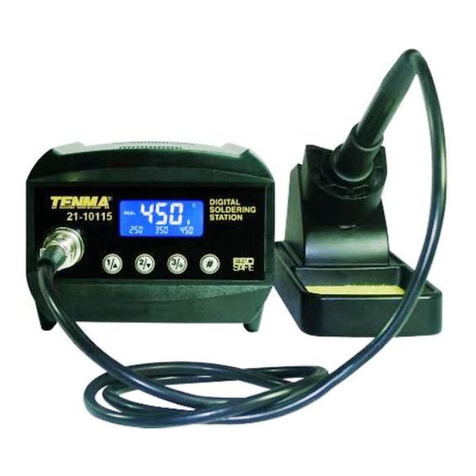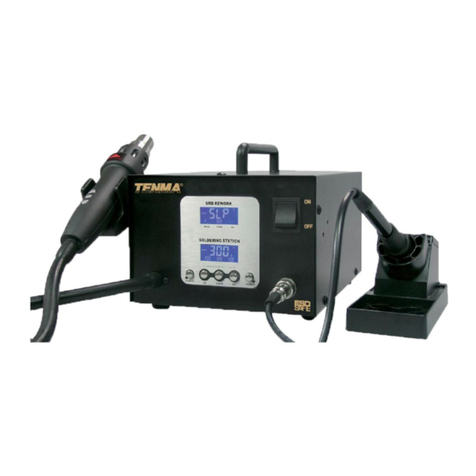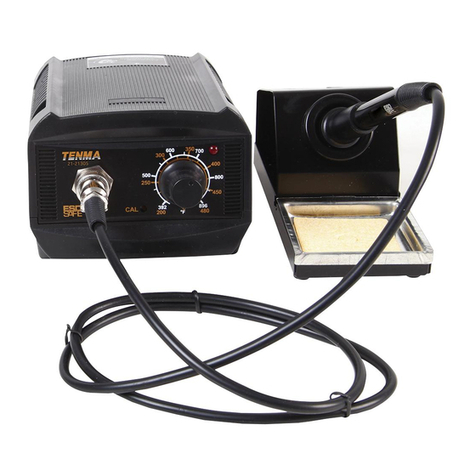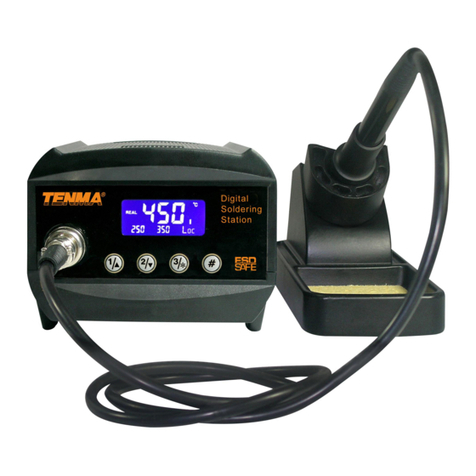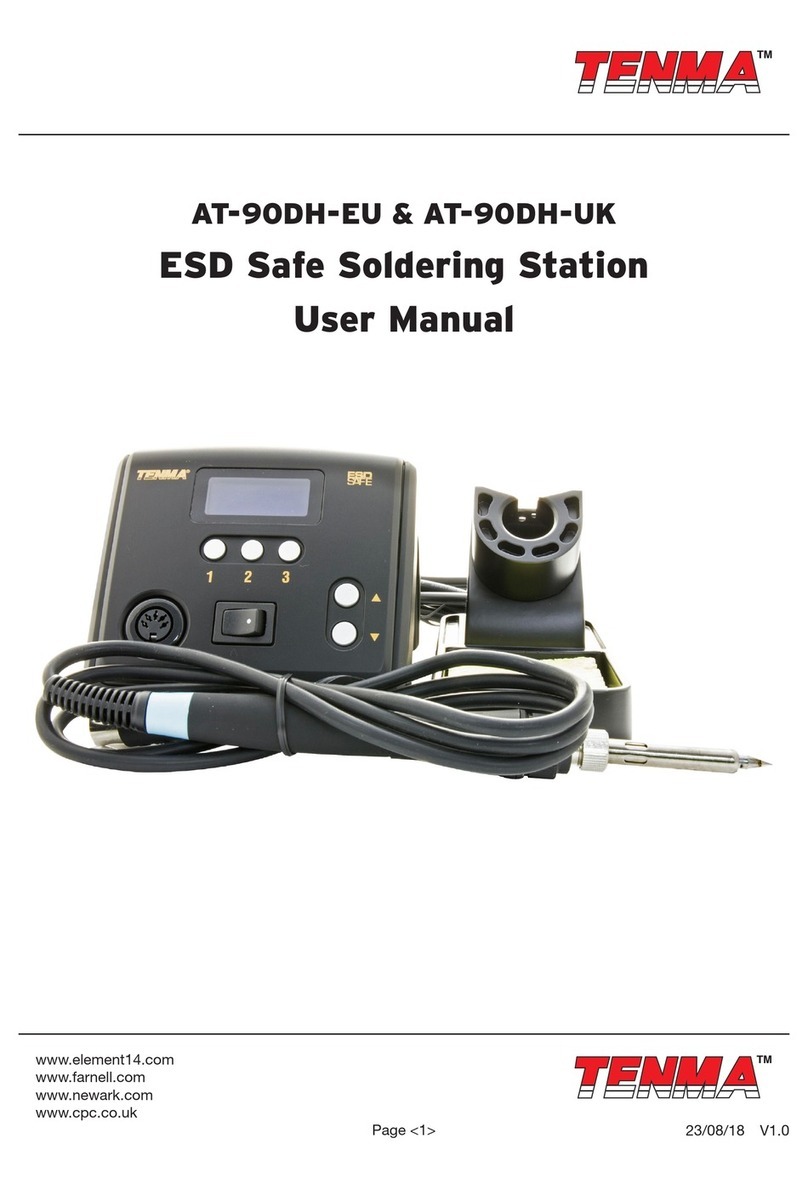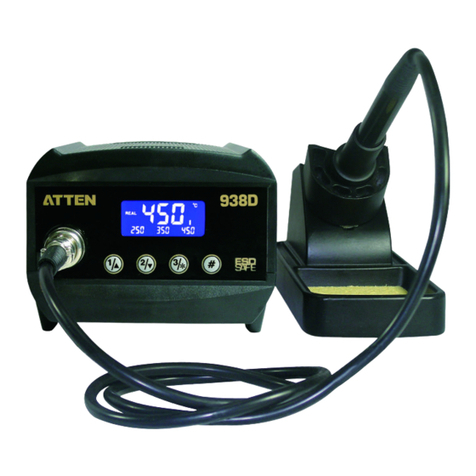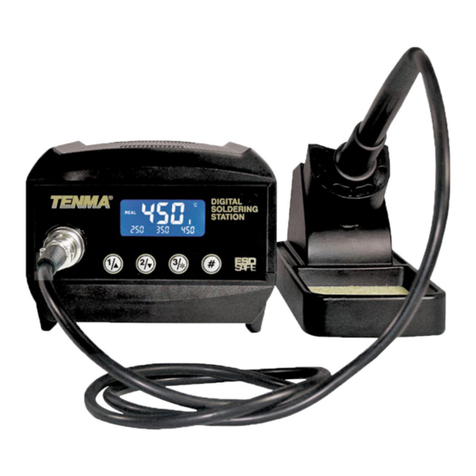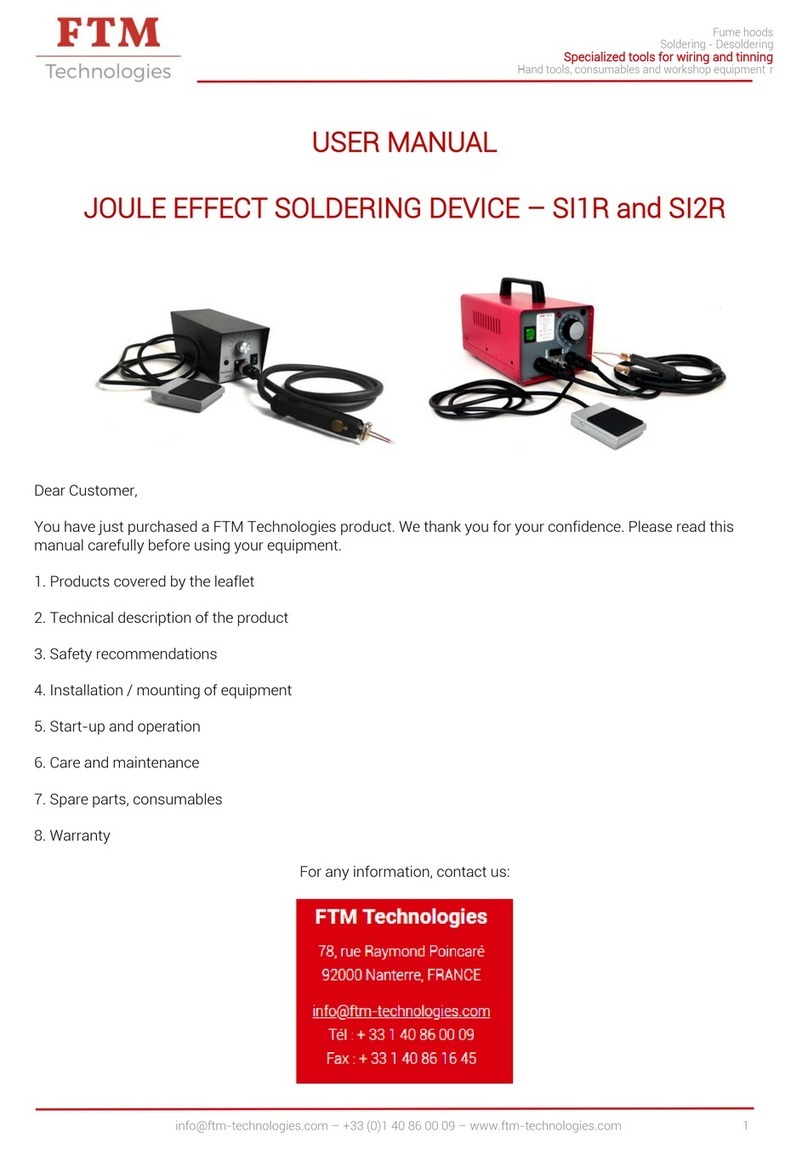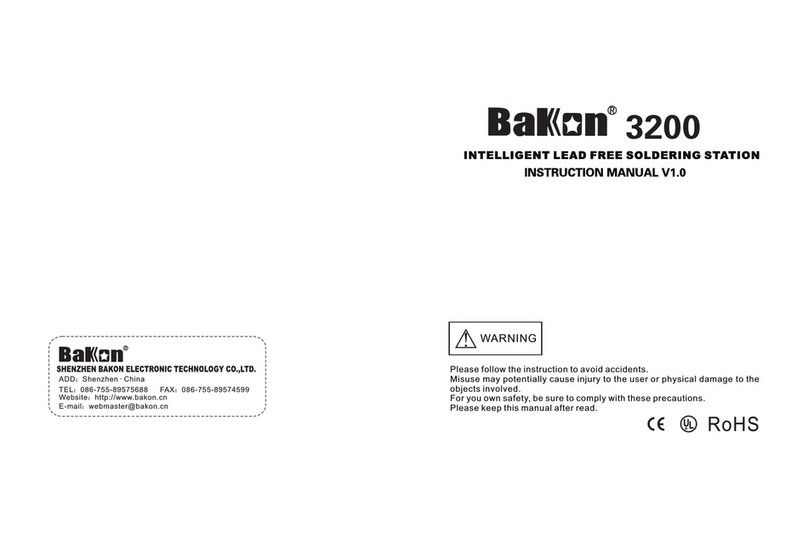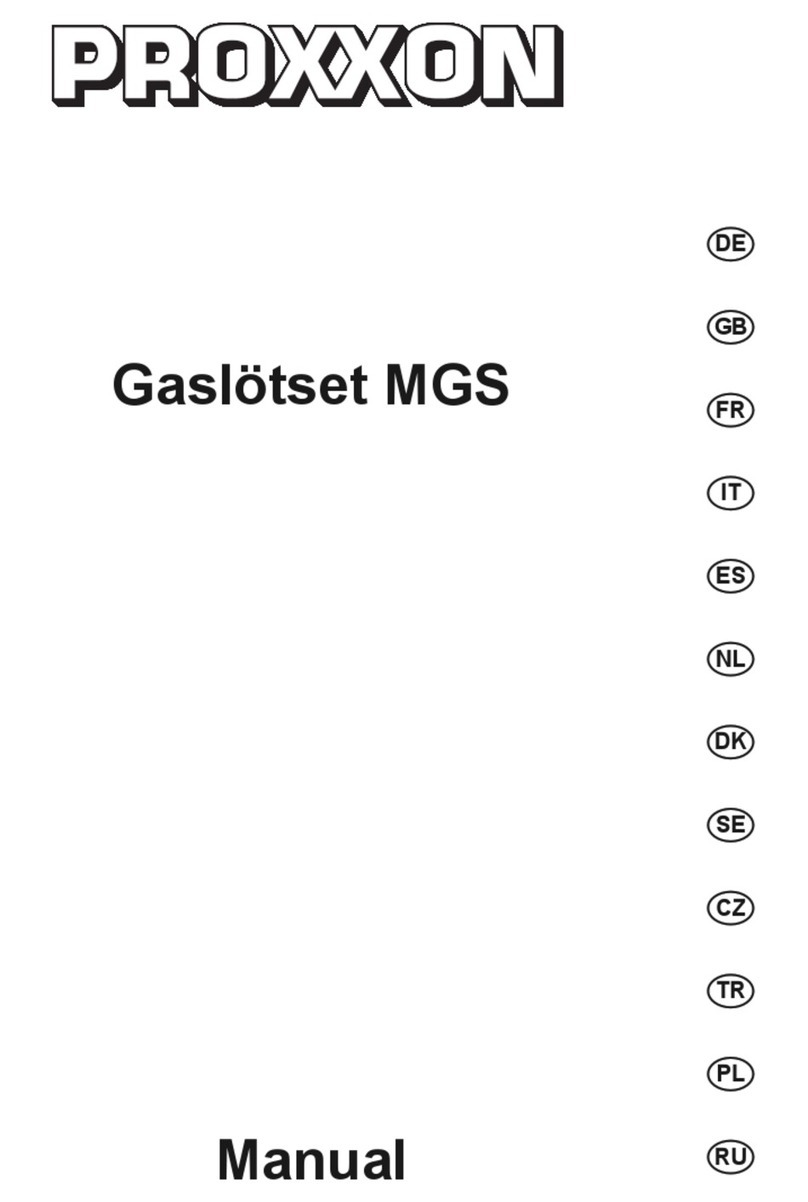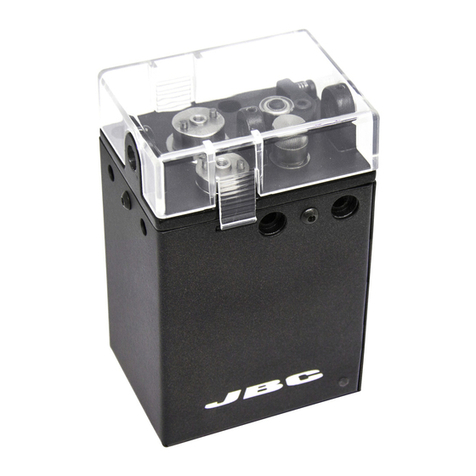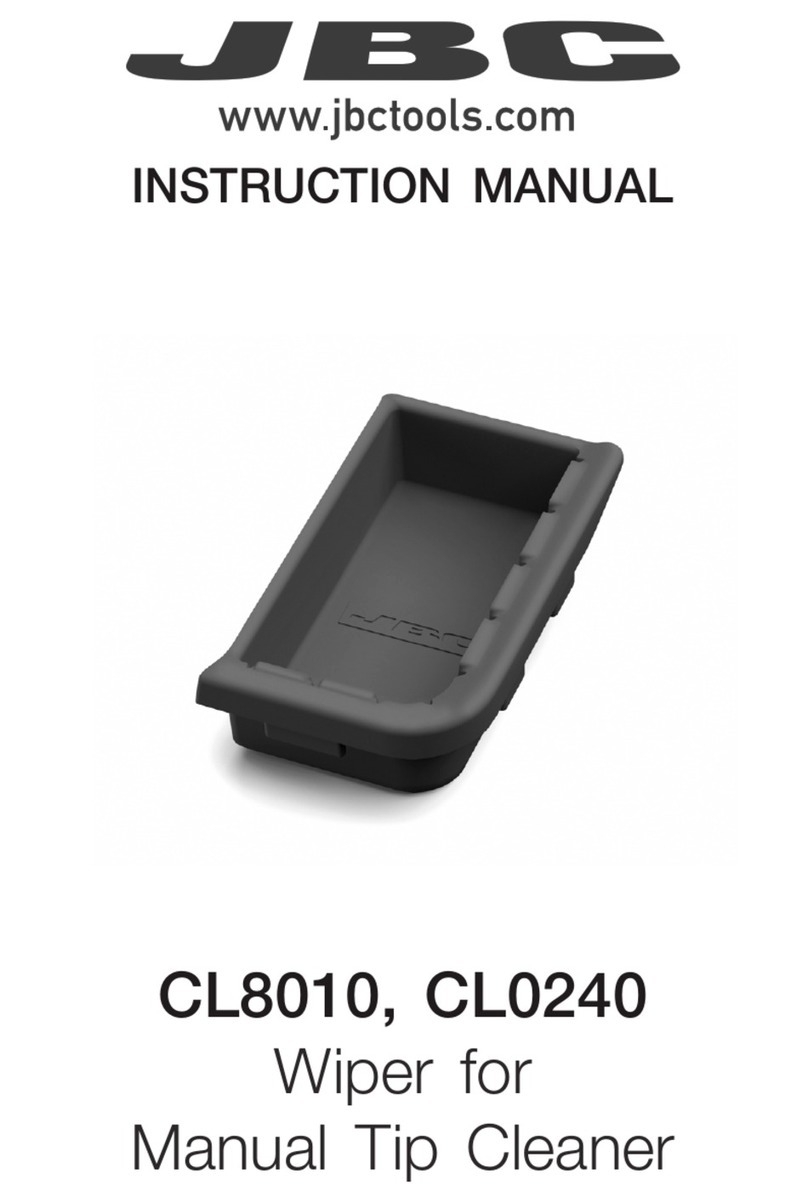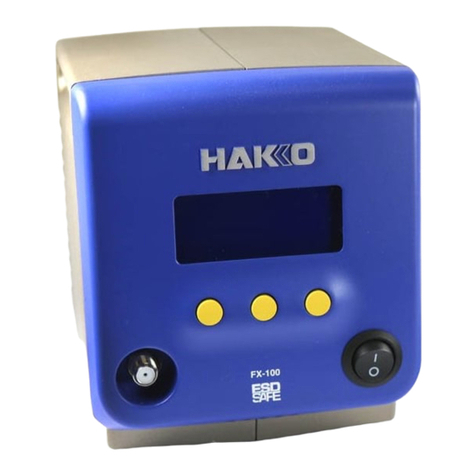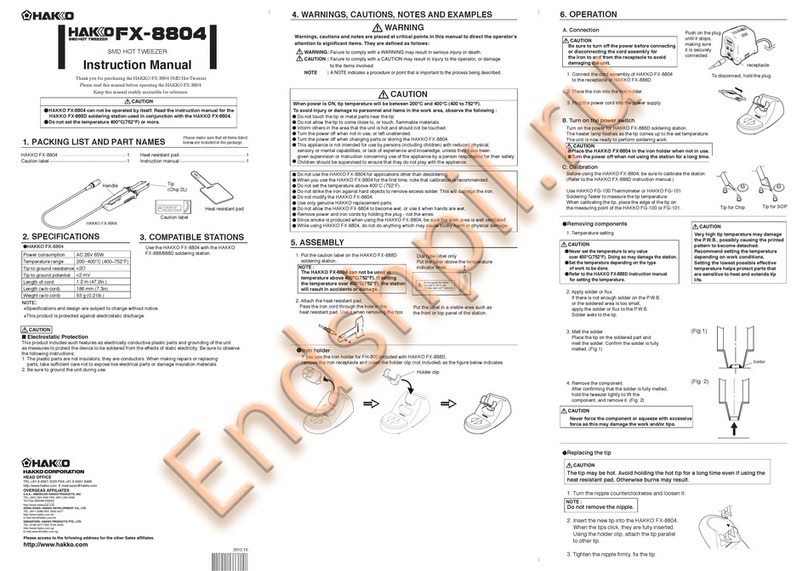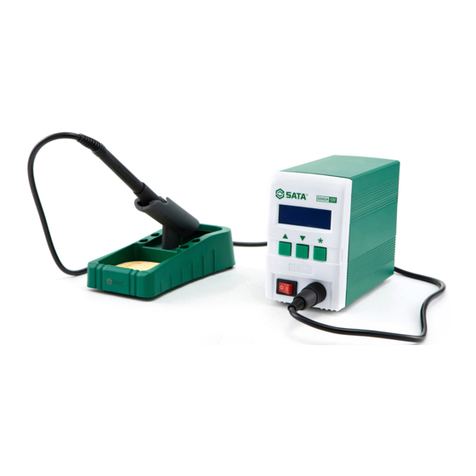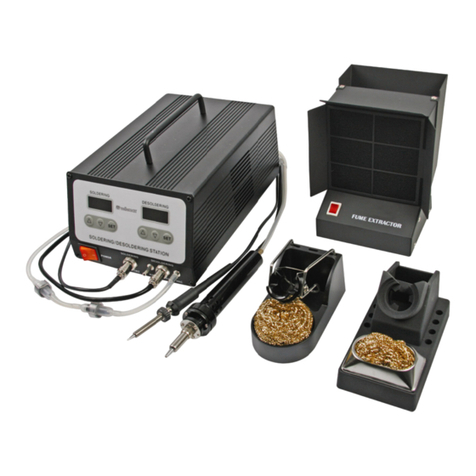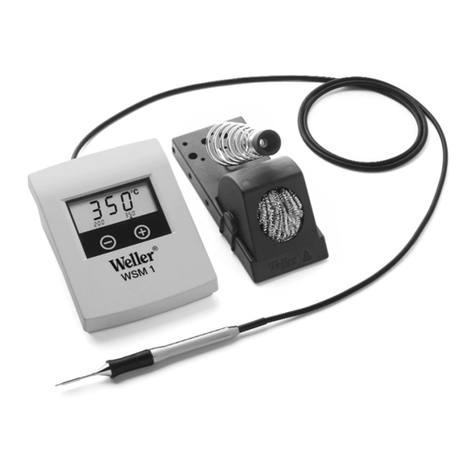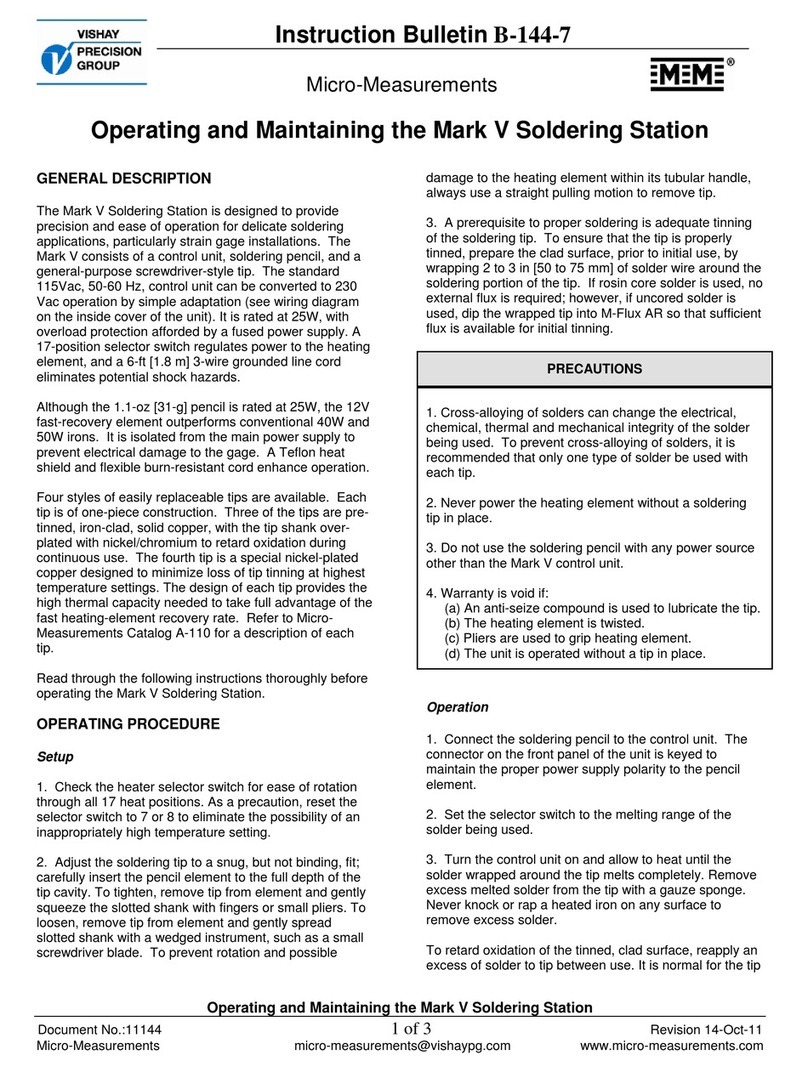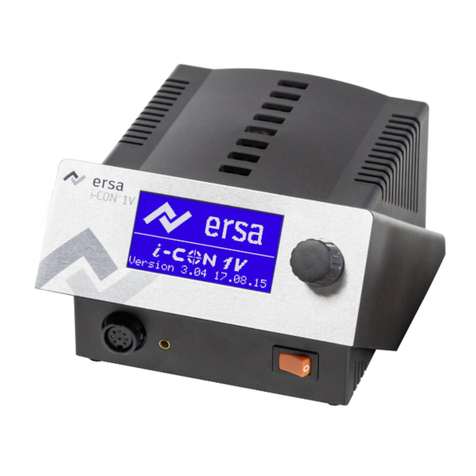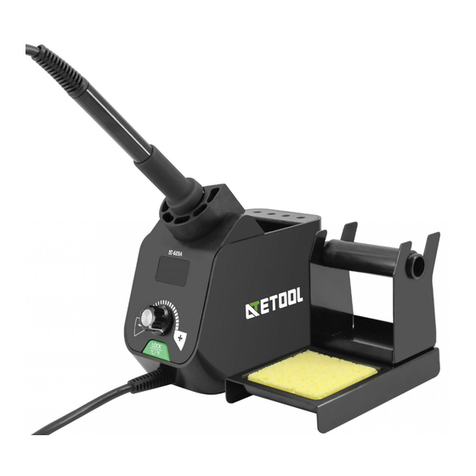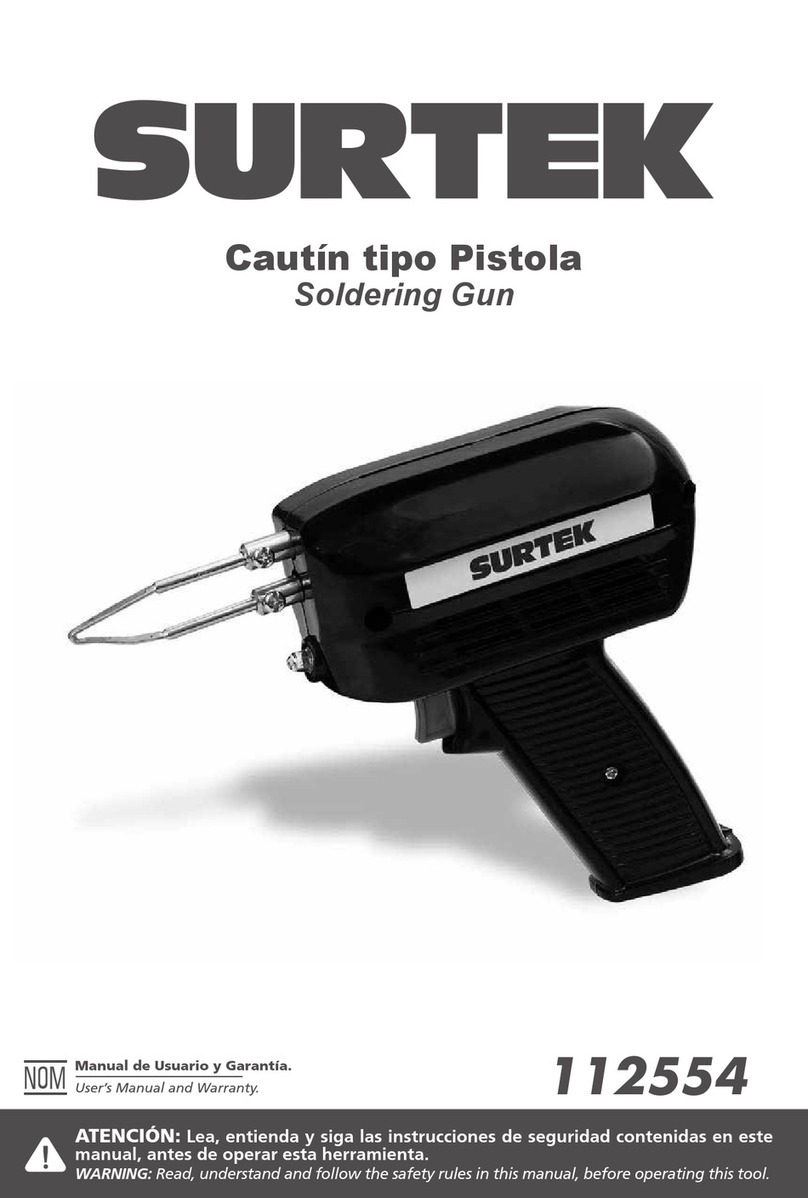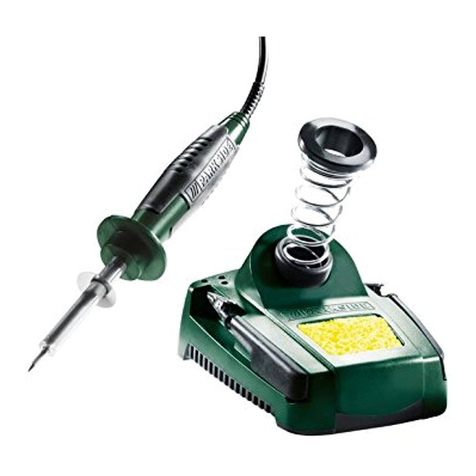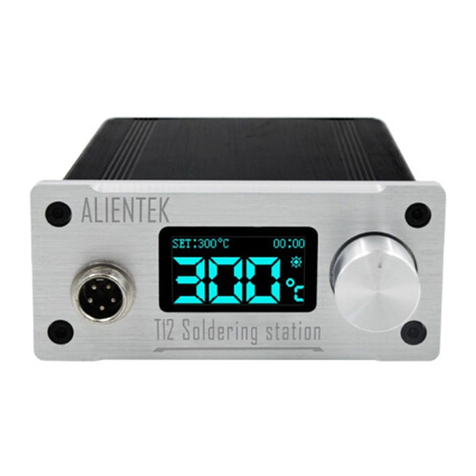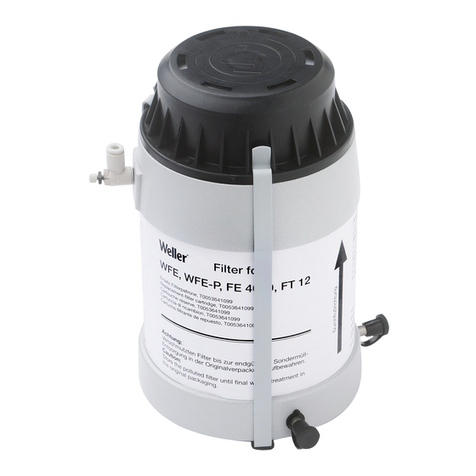Tenma 21-19650 User manual

This appliance can be used by children aged form 8 years and above and persons
with reduced physical, sensory or mental capabilities or lack of experience and
knowledge if they have been given supervision or instruction concerning use of
the appliance in a safe way and understand the hazards involved. Children shall
not play with the appliance. Cleaning and user maintenance shall not be made by
children without supervision.
The specific instructions related to the safe operation of this appliance (as given in
7.12 of this standard) shall be collated together in the front section of the user
instructions.
The height of the characters, measured on the capital letters, shall be at least 3
mm.
These instructions shall also available in an alternative format, e.g. on a website.
A fire may result if the appliance is not used with care, therefore:
→ be careful when using the appliance in places where there are combustible
materials ;
→ do not apply to the same place for a long time;
→ do not use in presence of an explosive atmosphere;
→ be aware that heat may be conducted to combustible materials that are out
of sight;
→
place the appliance on its stand after use and allow it to cool down before
storage;
→ do not leave the appliance unattended when it is switched on.
Rohs
Correct Disposal of this product
This marking indicates that this product should not be disposed
with other household wastes throughout the EU. To prevent pos-
sible harm to the environment or human health from uncon-
trolled waste disposal, recycle it responsibly to promote the sus-
tainable reuse of material resources. To return your used device,
please use the return and collection systems or contact the re-
tailer where the product was purchased. They can take this
product for environmental safe recycling.
www.Tenma.com
Instruction Manual
Thank you for purchasing the 21-19650 Soldering Station.
Please read the manual before using the unit.
Keep manual in accessible place for future reference.
Soldering Station
21
21-
-19650
19650

2
This manual is designed to familiarize and instruct the techni-
cian with the proper operation and maintenance of the equip-
ment. The “Care and Safety Precautions” section explains the
hazards of using any type of soldering or reworking device.
Please read carefully and observe the guidelines in order to
maximize usage and minimize the risk of injury or accidents .
15
BASIC TROUBLESHOOTING GUIDE
PROBLEM 1: THE UNIT HAS NO POWER
1. Check if the unit is switched ON.
2. Check the fuse. Replace with the same type if fuse is blown.
3. Check the power cord and make sure there are no disconnections.
4. Verify that the unit is properly connected to the power source.
PROBLEM 2: TEMPERATURE IS NOT INCREASING
Description: Tip temperature does not increase, display shows the word “PLUG”
SOLUTION:
The solder Iron is not connected or its connection is loosely connected to the main sta-
tion. Plug the solder iron firmly and lock into position.
CASE 2: Solder Iron is properly connected, display still shows “PLUG”
SOLUTION:
The heating element may have been damaged. Replace heating element. Or check the
wirings of the solder iron pen.
PROBLEM 3: DISPLAY SHOWS WARNING MESSAGES
Description: Display shows the word “ TiP”
SOLUTION:
This indicates that the tip is not inserted or is not properly attached to the soldering iron.
CASE 2: Display shows the word “ OFF”
SOLUTION:
The system has gone into protection mode. It may be that the system has detected an
over heat in the tip temperature due to improper calibration and system initialization.
Repeat the steps in page 8 under SYSTEM INITIALIZATION and TIP CALIBRATION.
Ensure that the maximum temperature is only at 450C.
PROBLEM 4: SOLDER IRON IS OVERHEATING
Description: Solder iron tip is getting too hot while the displayed actual temperature
stays is dropping or displays OFF.
SOLUTION:
Digital offset settings might be adjusted too high causing overheat protection. Repeat the
steps in page 8 under SYSTEM INITIALIZATION and TIP CALIBRATION.
Ensure that the maximum temperature is only at 450C.
PROBLEM 5: OTHER PROBLEMS NOT MENTIONED IN THIS DOCUMENT
SOLUTION: Contact authorized service station.

14
CARE AND MAINTENANCE
1. Tip Temperature : High temperature shortens tip life and may
cause thermal shock to components. Always use the lowest possi-
ble temperature when soldering. Standard temperature settings are
350 to 400 degrees Celsius.
2. Cleaning :Always clean the soldering tip before use to remove any
residual solder or flux adhering to it. Use a clean and moist cleaning
sponge. Contaminants on the tip have many detrimental effects
including reduced heat conductivity which contribute to poor sol-
dering performance.
3. After usage: Always clean the tip and coat it with fresh solder
after use. This guards against oxidation and pro-longs tip life.
4. System Care: Never allow the unit to stay idle at high temperature
for extended periods. Utilize the automated sleep feature to con-
serve energy, pro-long tip and heating element life. If unit will not be
used for long periods it is advised to power down the unit and un-
plug from the mains.
5. Inspecting and cleaning the tip:
◆ Set the temperature to 250oC.
◆ When the temperature stabilizes, clean the tip and check its condi-
tion. If the tip is badly worn or deformed, replace it.
◆ If the solder plated part of the tip is covered with black oxide, apply
fresh solder containing flux and clean the tip again. Repeat until all
the oxide is removed then coat the tip with fresh solder.
◆ Never file the tip to remove oxide.
◆ Remaining oxides such as the yellow discoloration on the tip shaft can be
removed with isopropyl alcohol.
3
TABLE OF CONTENTS
Product Description …………………………………… 4
Package Inclusion …………………………………… 4
Safety Precautions …………………………………… 5
Specifications …………………………………… 6
Functions and Features ……………………………… 6
Control Panel Guide …………………………………… 6
Operating Guidelines ……………………………… …. 7— 13
Initial Procedures ……………….. 7
System Initialization …………….. 8
Tip Calibration …………………… 8
Temperature Control ……………. 9
Quick Jump Feature ……………. 9
Sleep Function …………………… 10
System Lock ……………………… 11
Temperature Scale ……………… 12
Automated Calibration ………… 12
Care and Maintenance ……………………………. ... 14
Basic Troubleshooting Guide ………………………. ….. 15

4
PRODUCT DESCRIPTION
The TENMA 21-19650 is a high performance induction heating
soldering iron. It is equipped with a quick heating induction heater
and specially designed tips suitable for advance lead free soldering .
The separate tip and heater design offers cost efficiency and easy
replacement of tips.
It has various functions and features such as digital offset,
System lock-out , quick jump, Temperature Scale selection, auto
sleep and auto calibration.
These functions will be discussed in greater detail together with
the complete features in the succeeding sections of this manual.
PACKAGE INCLUSION
1 unit 21-19650 Main Station
1 pc. Soldering Iron
1 pc. Soldering Iron Stand
1 pc. Power Cord
1 pc. Instruction Manual
** Kindly refer to soldering iron stand installation on page 7 for parts and instructions.
13
OPERATING GUIDELINES
With the auto-calibration adaptor attached, tip calibration can be
done via the following method:
1. While the unit is ON , press and hold the set button.
2. Wait for the display to change to “A###”, then repeatedly press the
“SET” button until the prefix “G” or “G###” is displayed. This denotes
that we are now in autocalibration mode.
3. Place the tip of the soldering iron to the sensor of the auto-
calibration adaptor. Wait for the temperature reading to stabilize.
4. Press the increase button to start auto calibration.
5. The display would jump to “A###”. The number shown indicates the
system has automatically calibrated the required digital offset pa-
rameters for the tip.
6. To save the newly calculated digital offset configuration, repeatedly
press the SET button until the display shows the word “SAVE”.
Press the increase button to save and exit from the system
configuration mode.
Note: During system configuration mode if it is decided that the
recently changed setting should not be saved into system
memory, repeatedly press the set button until the display shows
the word “CncL” (cancel). Press the increase button to exit system
configuration mode without saving the most recent changes
made.

12
OPERATING GUIDELINES
2. Wait for the display to change to “E999”. This denotes that the
system is waiting for the system lock PIN code.
3. Press the increase or decrease button to adjust to your previously
selected PIN code. Press the set button to confirm PIN code entry. If
PIN code is correct system lock would be disabled, if PIN entered is
incorrect the display would revert to “E999”.
4. If no PIN code is entered within a few seconds the system would
revert to showing the actual temperature.
E. TEMPERATURE SCALE
The displayed temperature can be toggled between the centigrade
scale or the Fahrenheit scale.
To switch between the two scales follow these procedures:
1. While the unit is ON , press and hold the set button.
2. Wait for the display to change to “A###”, then repeatedly press the
“SET” button until “F C°” or “F F°” is displayed. This denotes that we
are now configuring temperature scale settings.
3. “F C°” indicates that the current system scale is Centigrade. “F F°”
denotes the selected temperature scale is the Fahrenheit scale.
Press the increase or decrease button to select between the two
temperature scales.
4. To save the temperature scale settings, repeatedly press the SET
button until the display shows the word “SAVE”. Press the increase
button to save and exit from the system configuration mode.
◆ The temperature display would change according to the scale
selected. A suffix “F” /“###F” indicates the Fahrenheit scale, while
“C” /“###C” indicated the Centigrade scale.
E. AUTOMATED CALIBRATION
The system’s automated calibration can only be activated and util-
ized if attached to our separate auto-calibration adaptor. For detailed
information on how to utilize this feature please refer to the manual pro-
vided with the auto-calibration adaptor.
5
SAFETY PRECAUTIONS
● Check each component after opening the package to make sure
everything is in good condition. If there are any suspected damage,
do not use the item and report the issue to your vendor.
● Turn OFF the main power switch and unplug the device from
power source when moving the device.
● Do not strike or subject the main unit (and all its components) to
physical shock. Use carefully to avoid damage to any part.
● Handle with care.
- Never drop or sharply jolt the unit.
- Contains delicate parts that may break if the unit is dropped.
● Make sure the equipment is always grounded. Always connect
power to a grounded receptacle.
● Temperature may reach as high as 480°C when switched ON.
- Do not use the device near flammable gases, paper and other flammable
materials.
- Do not touch heated parts, which can cause severe burns.
- Do not touch metallic parts near the tip.
● Disconnect the plug from the power source if the unit will not be
used for a long period.
- Turn off power during breaks, if possible.
● Use only genuine replacement parts.
- Turn off power and let the unit cool down before replacing any part.
● The unit may produce a small amount of smoke and unusual odor
during initial usage. This is normal and should not yield any nega-
tive result when reworking.
● Soldering process produces smoke — use on well ventilated
places.
● Do not alter the unit, specifically the internal circuitry, in any man-
ner.
CAUTION: Improper usage can cause serious injury to
personnel and/or damage to equipment and work area. For
your own safety, please observe the following precautions.

6
SPECIFICATION
Voltage Input : 100V to 240V
Power Supply : Switch mode
Station Dimensions: 110(w) x98 (h) x 155 (d) mm
Weight: 0.8Kg
Power Consumption: 70W
Temperature Range: 200°C - 450°C
Heating Element Induction heater
Output voltage: 50V
CONTROL PANEL GUIDE
FUNCTIONS and FEATURES
Microprocessor-controlled ESD safe Soldering station.
Induction heater with removable tip design.
Switch mode supply.
Compatible with Lead free applications.
High power heating element for fast heat recovery.
Auto sleep and wake up function.
Programmable sleep timer.
System-lock out feature.
Quick jump to favorite settings.
Switch between Centigrade and Fahrenheit scale.
Automated calibration.
1
2
3
4
5
Main
Display
Increase/ decrease
buttons
Set Button
Main power
switch Solder iron
connector
SOLDERING
STATION
21-19650
11
OPERATING GUIDELINES
4. To save the settings, repeatedly press the SET button until the
display shows the word “SAVE”. Press the increase button to save
and exit from the system configuration mode.
D. SYSTEM LOCK
The System lock feature disables adjustment to both temperature
and system configuration. The display will show “ Pin” when system
lock feature is enabled. A PIN code is required to regain access to the
system’s settings and temperature adjustment. This PIN code is user
defined and this feature can be disabled.
To activate the system lock feature and select desired PIN code:
1. With the unit turned On, press and hold the SET button.
2. Wait for the display to change to “A###”, then repeatedly press the
“SET” button until a number with prefix “E” or “E0FF” is displayed.
This denotes that we are now configuring the system lock setting.
3. “E0FF” indicates that the system lock function is currently disabled.
To select a system lock PIN code press the increase or decrease
button. Select a number between 1 and 998.
4. To save and activate the system lock settings, repeatedly press the
SET button until the display shows the word “SAVE”. Press the
increase button to save and exit from the system configuration
mode.
5. The display would show the word “ Pin”, indicating system lock is
enabled.
When the system lock feature is enabled changing of temperature
and system settings are blocked. The system lock PIN must be en-
tered to re-enable access to the system.
To de-activate the system lock enter the system lock PIN code
thru the following method:
1. With the unit turned On, press and hold the SET button.

10
OPERATING GUIDELINES
3. Select your desired quick jump temperature level by pressing the
increase or decrease button.
4. To adjust the second quick jump level, repeatedly press the “SET”
button until a number with a prefix “c” is displayed. This denotes that
we are now configuring the Second quick jump setting.
5. Select your desired quick jump temperature level by pressing the
increase or decrease button.
6. To save the settings, repeatedly press the SET button until the
display shows the word “SAVE”. Press the increase button to save
and exit from the system configuration mode.
7. The two quick jump settings has now been configured and can be
accessed by simultaneously pressing the “INCREASE” and “SET”
button for the first Quick jump level. And simultaneously pressing the
“DECREASE” and “SET” button will access the second quick jump
level.
C. SLEEP FUNCTION
The Soldering Iron is equipped with a vibration sensor. When the
soldering iron has been left unmoved the system would begin the count
down of the sleep timer. The suffix will change to a small letter “d” to
indicate that the system is preparing to enter sleep mode. The display
will show four dashes “- - - - “ to indicate the system has entered sleep
mode. To wake the system, simply lift up the soldering iron or push any
control buttons.
Sleep timer is configurable via the following method:
1. With the unit turned On, press and hold the SET button.
2. Wait for the display to change to “A###”, then repeatedly press the
“SET” button until a number with prefix “d” or “d0FF” is displayed.
This denotes that we are now configuring the sleep timer setting.
3. “d0FF” indicates that the sleep function is currently turned off. To
adjust the timer settings press the increase or decrease button.
Sleep timer is adjustable from 1 to 60 minutes.
7
OPERATING GUIDELINES
REMINDERS:
1. Make sure the equipment is placed on a flat stable surface and
all the heat-generating components placed on their respective
holders or stands.
2. Ensure all function switches are in the OFF position.
3. Ensure all terminal connections are properly secured.
IMPORTANT: Please refer to the CONTROL PANEL
GUIDE page for buttons and display
panel directory.
A. INITIAL PROCEDURES
1.Soldering Iron Stand
2. Insert the power cord into the receptacle at the back of the station.
3. Plug the power cord into a grounded wall socket. The station is pro-
tected against electrostatic discharge and must be grounded for full
efficiency.
4. Be sure the power switch is OFF before connecting or disconnecting
the soldering iron cord. Failure to do so may result in damage to the
circuit board.
5. Follow instructions on soldering iron stand assembly guide.
6. Attach the soldering iron to the 5-pin output at the bottom right area
of the station.
7. Place soldering iron to the soldering iron stand as shown .
8. Dampen the sponge with water and squeeze excess water before
using. The tips maybe damaged when used with dry sponge.
9. The unit is now ready for use.
①
③
②

8
OPERATING GUIDELINES
B. SYSTEM INITIALIZATION
The 21-19650 is an advance system which uses a newly devel-
oped temperature sensing method. Therefore it is important that every
time a new pen is plugged into the machine this system initialization
routine and Tip calibration procedure be followed.
1. Ensure that unit is turned off.
2. Plug Soldering iron into its socket. Make sure the tip of the soldering
iron is at room temperature. (between 20 to 30 C)
3. Press and hold the SET button while switching the unit on. Wait for
the display to show three zeros “000” before letting go of the SET
button.
4. After a few seconds the display would switch to 350C, which indi-
cates the pen has been successfully registered into the machine.
The next step is to calibrate the tip temperature.
C. CALIBRATING TIP TEMPERATURE
The tip should only be calibrated at a set temperature of 350C.
Calibrating at this level will ensure correct temperature in all
temperature level settings.
1. Set temperature to 350C. Measure the tip temperature through an
external temperature reader with a thermocouple as its sensor. En-
sure the external temperature reader’s sensor and the solder iron’s
tip can keep good physical contact. Wait for the display to reach the
set temperature of 350C, then allow the tip to idle at the sensor for
60 seconds for proper temperature measurement.
2. Press and hold the SET button to enter the system configuration
mode. Wait for the display to change to a number with an “A” as its
prefix. This denotes that we are now configuring the digital offset of
the system. A display like “A000” indicates that the digital offset is
currently set at neutral.
3. Press the increase and decrease button to adjust the digital offset. A
negative number denotes a negative offset and a positive number
denotes a positive offset.
9
OPERATING GUIDELINES
5. Adjust the offset number until the external temperature sensor
reading is equal to our set temperature of 350C.
6. Repeatedly press the SET button until the display shows the word
“SAVE”. Press the increase button to save and exit from the system
configuration mode.
7. The tip has now been properly calibrated.
8. Saved settings are stored into memory and will remain in effect un
less changed by the user.
D. TEMPERATURE CONTROL
1. Turn the power ON.
2. The display would show a number between 200 to 480 indicating
the set temperature. Default setting is at 350C
3. After a few seconds the display would then switch to showing the
actual temperature.
4. To Increase or decrease the temperature, press the temperature
control increase or decrease buttons.
5. Temperature control range is from 200C to 450C.
D. QUICK JUMP FEATURE
The system has two configurable quick jump settings. The quick
jump features enables the user to easily jump to a predefined tempera-
ture level. The two most frequently used temperature level must first be
saved into system memory. A simple push of two button will automati-
cally jump to these preset temperature level.
To configure these two temperature level:
1. Press and hold the SET button to enter the system configuration
mode.
2. Repeatedly press the SET button until the display shows a number
with “b” as its prefix. This denotes that we are now configuring the
first quick jump setting.
Table of contents
Other Tenma Soldering Gun manuals
